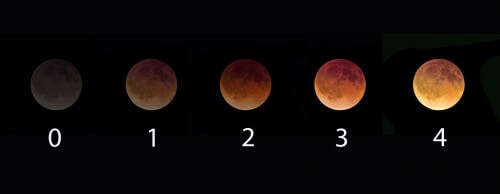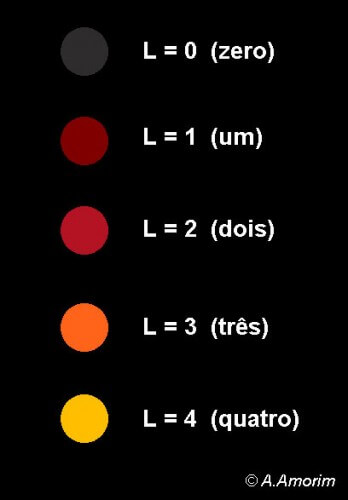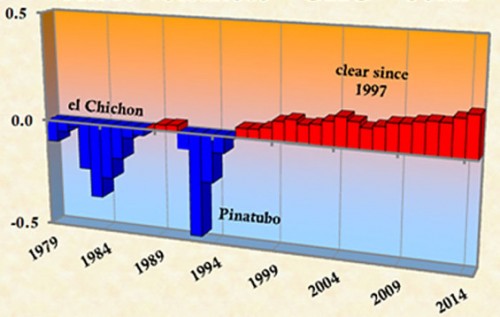Supermoon, blood moon and other names for a white eclipse like the one that will occur tonight. A researcher at the University of Colorado in Boulder asks surfers to send him one figure from zero to four that describes the brightness and color of the moon according to the dungeon scale that appears in this article and can be printed or transferred to a cell phone

There are many ways to enjoy the total lunar eclipse that is expected tonight when the moon is expected to be a "supermoon". First and foremost, you can sit back and watch the moon's slow entry into the earth's colored shadow when it is larger than the average size of the moon due to the moon also happening to be close to the nearest point most in his path. You can take pictures, watch through a telescope or participate in a small and easy science experiment: observe the moon and describe its brightness on a scale known as the Dungeon scale and send the results to researchers who will use it to study the Earth's atmosphere. Print or download the following photo to your cell phone and compare the real moon to the nearest step on the scale. Note that there are differences between different printers and certainly between phone models

In the XNUMXs, the French astronomer André Danjon developed a five-stage scale that characterizes the appearance of the moon during the total eclipse phase. The scale ranks the following values:
- L=0: very dark eclipse. The moon is almost invisible, especially in the middle of the total eclipse phase.
- L=1: dark eclipse - the color of the moon is dark brown or gray, and it is difficult to distinguish the details.
- L=2: An eclipse in which the moon is dark red or rust-colored, very dark in the middle of the transition in the shadow of the earth, and in the other stages of crossing the cone of the shadow, the moon is relatively bright.
- L=3: The moon is the red color of tiles. The shadow cone has a light or yellow border.
- L=4: The moon is copper-red in color, or orange during the eclipse, the shadow cone has a very bright edge, in a color that tends to blue.
Recent lunar eclipses have been pretty bright, 2-3 on the dungeon scale, but we won't know how bright tonight's eclipse will be until we pass it. The Brazilian amateur astronomer Alexandra Amorin developed downloadable danjometer, (see the picture) and simply compare the appearance of the moon outside and the closest colors and brightness that appear on the phone screen.
On the night of the eclipse, hold the phone in the direction of the moon during the middle of the eclipse and try to estimate the value of L with the naked eye. You can then send the data to Dr. Richard Keen from the University of Colorado, at richard.keen@colorado.edu and just to be sure, also compare the appearance of the eyes with the photograph on this page before sending the final estimate.
Cain, professor emeritus in the Department of Atmospheric and Oceanic Sciences at the University of Colorado at Boulder studied how volcanic eruptions affected both the color of the moon and the rate of global warming. Each eclipse provides another opportunity to gauge the current state of the atmosphere and in particular the amount of dust in the stratosphere, the layer that is immediately next to the layer that touches the ground - the troposphere. Most of the sunlight remaining in the shadow cone is filtered in the stratosphere.
Volcanoes emit sulfur compounds and ash high into the atmosphere, "dirtying" the stratosphere, which is usually clean, with volcanic ash. This ash absorbs both the light and the rest of the sun's energy. This is why eclipses that occurred after a major volcanic eruption can be dark with L values of 0 and 1.
One of the dark eclipses of recent decades occurred on December 30, 1982 after the spectacular eruption of the El Chichon volcano in Mexico that threw 7-10 million tons of ash into the atmosphere. The sulfur compounds spread throughout the Earth for weeks, absorbing the light and heating the stratosphere by four degrees Celsius.
Due to this absorption, less sunlight reaches the earth and this caused the northern hemisphere to cool by 0.4-0.6 degrees Celsius. The crescent moon was so dark that anyone who didn't know where to look would miss it.
Keen's research focused on the question of how the almost clean stratosphere in recent years affects the rate of global warming compared to the dark eclipses that occurred until 1996. Your simple observation will provide more data to improve our understanding of atmospheric processes and how they are related to climate change.

For information on the Universe Today website
More of the topic in Hayadan:
- The moon is expected to be especially large during the eclipse on the night of Sukkot (Monday morning)
- This is what a white eclipse looks like - from the planet Mercury
- 2,600 years to the first scientific prediction - Thales' solar eclipse
The phases of the eclipse and the schedule for observers in Tel Aviv. From the NASA website
| Events | UTC-Time | Time in Tel Aviv* | Visible in Tel Aviv |
| Penumbral Eclipse begins | Sep 28 at 00:11 pm | Sep 28 at 03:11 pm | Yes |
| Partial Eclipse begins | Sep 28 at 01:07 pm | Sep 28 at 04:07 pm | Yes |
| Full Eclipse Begins | Sep 28 at 02:11 pm | Sep 28 at 05:11 pm | Yes |
| Maximum Eclipse | Sep 28 at 02:47 pm | Sep 28 at 05:47 pm | Yes |
| Full Eclipse ends | Sep 28 at 03:23 pm | Sep 28 at 06:23 pm | Yes |
| Partial Eclipse ends | Sep 28 at 04:27 pm | Sep 28 at 07:27 pm | No, below horizon |
| Penumbral Eclipse ends | Sep 28 at 05:22 pm | Sep 28 at 08:22 pm | No, below horizon |
*The moon will be below the horizon for part of the eclipse, luckily for us, the main part - the total eclipse phase - will be fully visible.

2 תגובות
Lots of information and live streaming here
http://www.cosmos.co.il/news/lunar_eclipse_Sep_28_2015.htm
L = 2
Can I please have the link from which you took the information you described under "Eclipse stages and schedule for Tel Aviv viewers"?